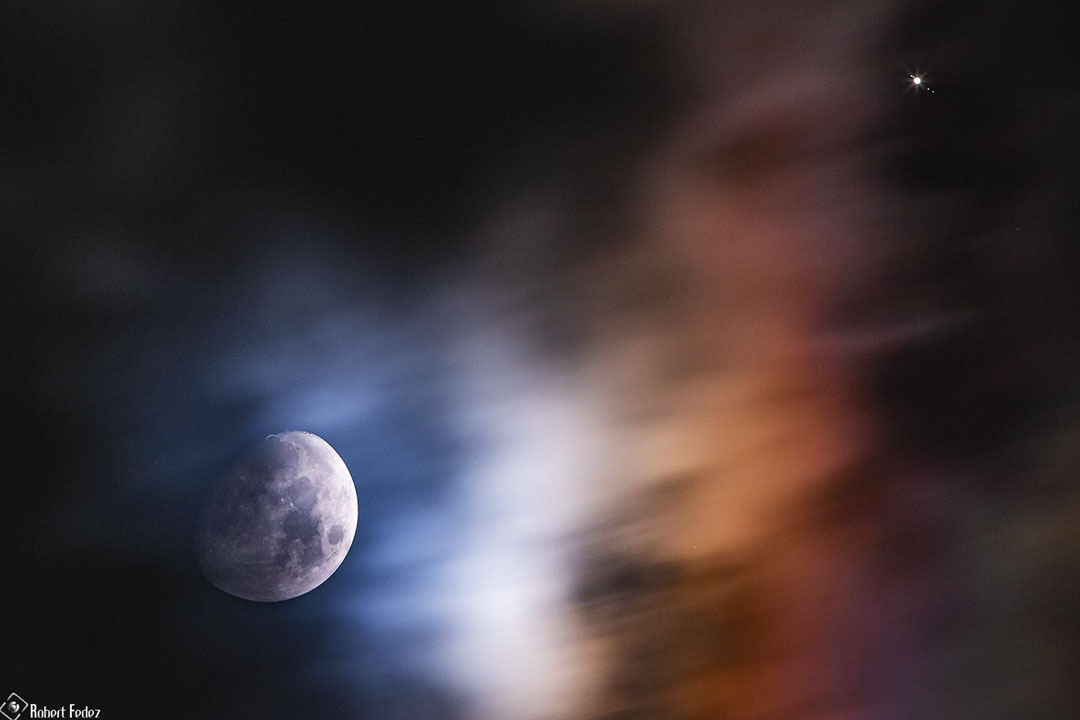2020年9月2日
Jupiter and the Moons
Image Credit & Copyright: Robert Fedez
Explanation: How many moons do you see? Many people would say one, referring to the Earth’s Moon, prominent on the lower left. But take a closer look at the object on the upper right. That seeming-star is actually the planet Jupiter, and your closer look might reveal that it is not alone – it is surrounded by some of its largest moons. From left to right these Galilean Moons are Io, Ganymende, Europa and Callisto. These moons orbit the Jovian world just like the planets of our Solar System orbit the Sun, in a line when seen from the side. The featured single shot was captured from Cancun, Mexico last week as Luna, in its orbit around the Earth, glided past the distant planet. Even better views of Jupiter are currently being captured by NASA’s Juno spacecraft, now in a looping orbit around the Solar System’s largest planet. Earth’s Moon will continue to pass nearly in front of both Jupiter and Saturn once a month (moon-th) as the two giant planets approach their own great conjunction in December.
Almost Hyperspace: Random APOD Generator
Tomorrow’s picture: open space
木星和卫星
影像提供与版权: Robert Fedez
说明: 你能见到多少颗卫星呢?许多人会说一颗,专指影像左下角清晰无比的地球卫星─月亮。不过,右上角那颗像恒星的天体其实是木星,而且如果再细看就会现发它并不孤单,周围环拱着数颗最大的卫星。从左到右,这些伽利略卫星分别为木卫一、木卫三、木卫二和木卫四。这些卫星绕着木星运行,其行为酷似太阳系的行星绕行太阳,而且从侧边看过去,它们排列成行。这幅单曝光的主题影像,是在上星期摄于墨西哥的坎昆市,当时在绕地轨道上的月亮掠过这颗外围行星附近。目前观测木星的最佳平台是美国航太总署的朱诺号太空船,它沿渐次前移的环形轨道,绕行木星这颗太阳系最大的卫星。月亮每个月都会近距离掠过木星与土星前方一次,而这二颗巨行星的最小间隔近合会出现在今年的12月。
几乎超空间:随机APOD生成器
明日的图片: open space



